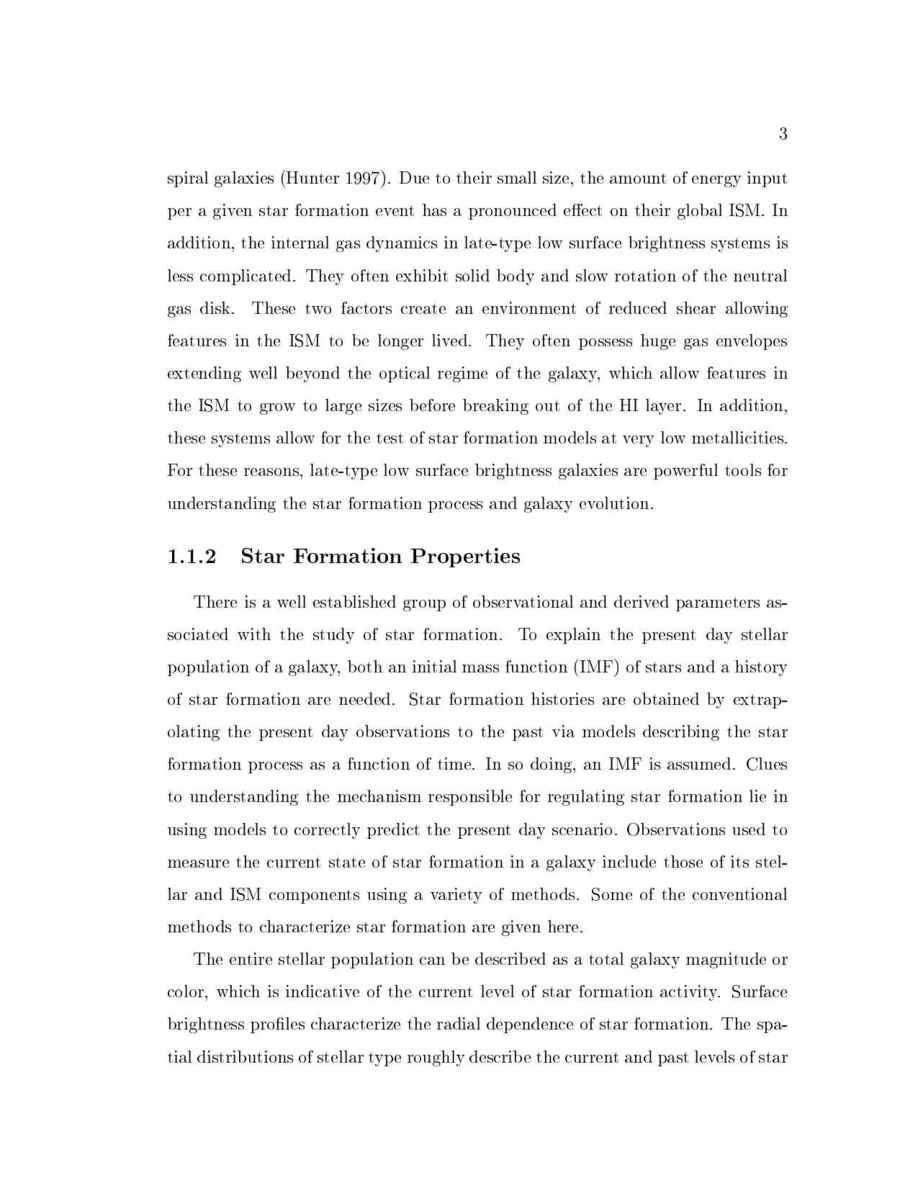Astronomical Applications Department, U.S. Naval Observatory thesis Page 17

3
spiral galaxies Hunter 1997. Due to their small size, the amount of energy input
per a given star formation event has a pronounced e ect on their global ISM. In
addition, the internal gas dynamics in late-type low surface brightness systems is
less complicated. They often exhibit solid body and slow rotation of the neutral
gas disk. These two factors create an environment of reduced shear allowing
features in the ISM to be longer lived. They often possess huge gas envelopes
extending well beyond the optical regime of the galaxy, which allow features in
the ISM to grow to large sizes before breaking out of the HI layer. In addition,
these systems allow for the test of star formation models at very low metallicities.
For these reasons, late-type low surface brightness galaxies are powerful tools for
understanding the star formation process and galaxy evolution.
1.1.2 Star Formation Properties
There is a well established group of observational and derived parameters as-
sociated with the study of star formation. To explain the present day stellar
population of a galaxy, both an initial mass function IMF of stars and a history
of star formation are needed. Star formation histories are obtained by extrap-
olating the present day observations to the past via models describing the star
formation process as a function of time. In so doing, an IMF is assumed. Clues
to understanding the mechanism responsible for regulating star formation lie in
using models to correctly predict the present day scenario. Observations used to
measure the current state of star formation in a galaxy include those of its stel-
lar and ISM components using a variety of methods. Some of the conventional
methods to characterize star formation are given here.
The entire stellar population can be described as a total galaxy magnitude or
color, which is indicative of the current level of star formation activity. Surface
brightness pro les characterize the radial dependence of star formation. The spa-
tial distributions of stellar type roughly describe the current and past levels of star
